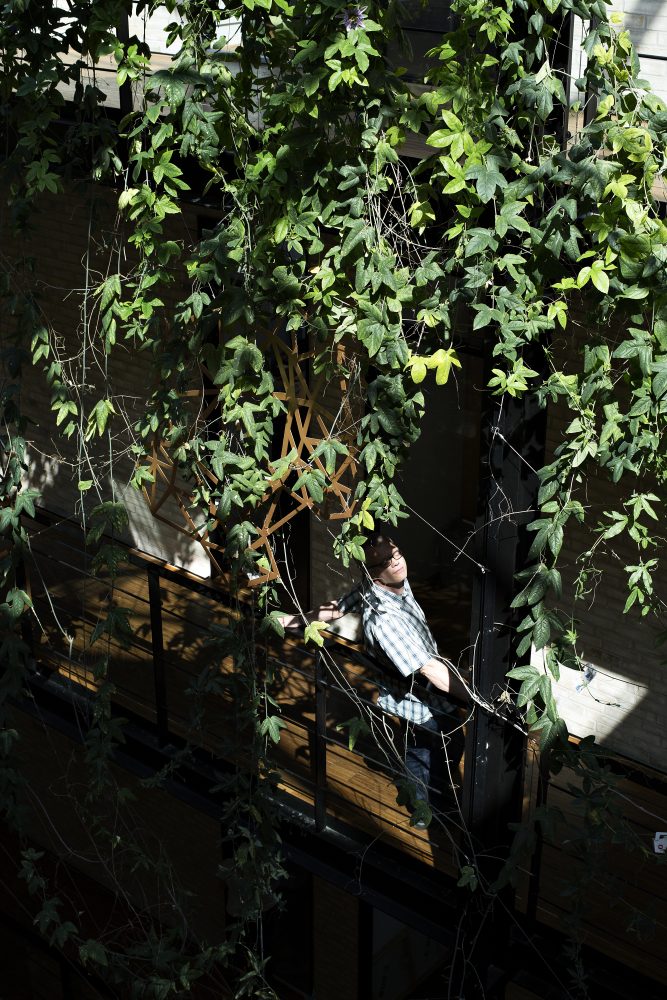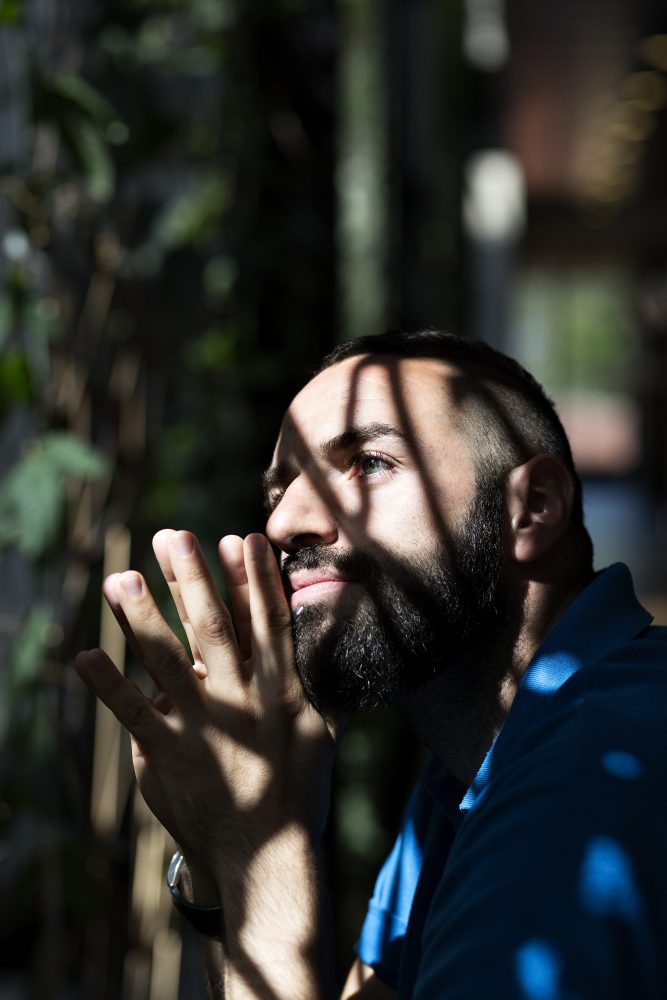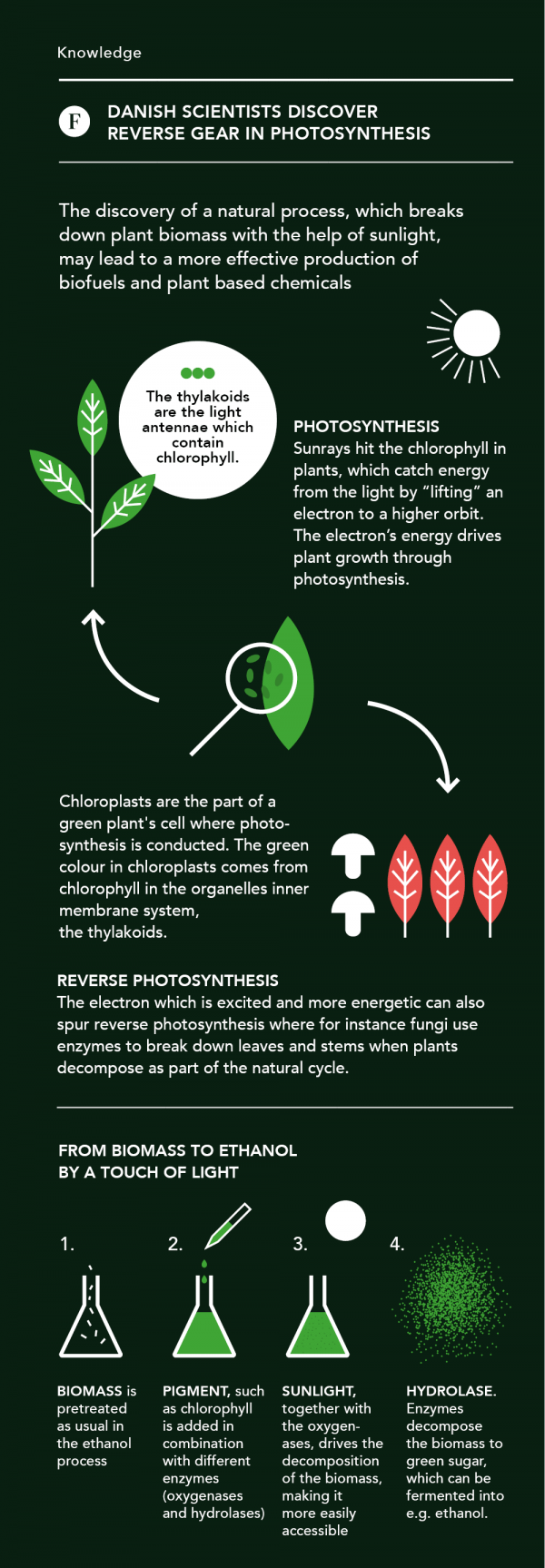In photosynthesis light energy is converted to chemical energy to build up plants. But a newly discovered process is doing the exact opposite — using sunlight to break down plant biomass into sugars, which is why the scientists behind the discovery call it reverse photosynthesis.
The discovery was made by a small group of scientists at the University of Copenhagen working on the decomposition of organic matter. Professor Claus Felby calls their discovery a true game changer in moving towards a society free of fossil fuels.
“It is a new way of using the sun’s energy that no human has thought of before. This process can use light energy directly as a driver in several chemical processes much faster and more efficiently than has ever seen before — a light-driven chemical engine so to speak,” Felby says.
Reverse photosynthesis can have a significant impact on the production of advanced biofuels and other bioproducts made from plant residues, such as straw and bagasse from sugarcanes. This type of biomass, which is difficult to biodegrade, needs no pre-treatment before it can become biofuel. Unlike conventional feedstocks, such as corn and maize, which can be used much more readily, optimising this pre-treatment can close the price gap between advanced and conventional biofuels.
The process can capture 50% of the sun’s energy, which is considerably more than photocells and photosynthesis can capture. Photosynthesis, for captures only 1-2%. With reverse photosynthesis, reactions usually lasting 24 hours today can happen in just ten minutes.
“This process can make biofuel and biochemical production much easier. But the possibilities are much, much bigger. Anything from light-driven toothpaste to making rocket fuels on Mars,” Felby says.
He and his research team partly attribute the discovery to the enzymes known as monooxygenases, which were only discovered five years ago. When enzymes and sunlight are added, plant material disintegrates.
Shades of green
One day while cleaning the lab, David Cannella, a postdoctoral researcher, looked at some green compounds fellow researcher Klaus Benedikt Möllers had left there.
“David called and asked if I could come to the lab. We had worked together on another project, and I had left a lot of stuff in the fridge. If you just leave cyanobacteria, they develop this blue-green colour. He asked what the blue stuff was, and I answered that it is their light-harvesting antennae, which had diffused out of the cells,” Möllers recalls.
[caption id=“attachment_5893” align=“aligncenter” width=“683”]  Blind luck. Sunlight is a main ingredient in building biomass. By noticing a strange colour in the lab, David Cannella and his research team went on to show that sunlight could also be used to decompose biomass.[/caption]
Blind luck. Sunlight is a main ingredient in building biomass. By noticing a strange colour in the lab, David Cannella and his research team went on to show that sunlight could also be used to decompose biomass.[/caption]
It was a true aha moment for Cannella and Möllers. They started to connect the dots and worked frantically trying different light sources and compounds.
”But it’s a long way from seeing the evidence to proving it, not to mention convincing your supervisor,” laughs Möllers.
In April 2015, they pulled Felby in front of the computer screen to show him their results:
“My first reaction was that they had made a mistake,” Felby says. “Then we started to do several controls and talked to experts in photosynthesis. After two months we were finally convinced that this was not an error.”

A Fountain of ideas
Felby believes that to make more of these game-changing discoveries, universities and research programmes need to change focus:
“This is the power of real innovation. Real innovation is where you discover something truly new. Currently, many research programmes in Denmark and the EU focus on improving existing products. But there is no way we would have found this, based on the standard funding mechanisms. Instead, we did the research in our spare time and David got a small project grant from The Danish Council for Independent Research,” Felby says.
”One of the lessons learned,” Felby continues, “Is that we really need to set research free. Let universities be universities and companies be companies. Give universities time to follow these crazy ideas and when it materializes into something, they should of course work together with companies in scaling and commercialising it, which we also do. But until then, you need to make room for creativity that is not bound by paradigms and research programmes. In order to think outside the box, you need to remove the box,” Felby concludes. •
TEXT Julie Søgaard / PHOTO Lars Just
